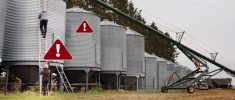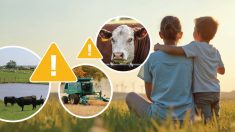Engineering improvements to farm equipment have made farming safer and are helping reduce the number of farm deaths each year in Canada — but only slightly.
High numbers of farmers, their family members and farm workers still die on the job each year, according to updated data released last week by Canadian Agricultural Injury Reporting (CAIR).
“The fatality rate is in slow decline,” said Don Voaklander, director of the Alberta Centre for Injury Control and Research, who presented the updated statistics during the annual general meeting of the Canadian Agricultural Safety Association in Saskatoon.
Read Also

Seeding Indigenous agricultural prosperity
National Circle for Indigenous Agriculture and Food says Indigenous agricultural success needs strong relationships.
“The good news is we’re not getting any worse,” he said. “The bad news is proportionately we’re not getting any better. We’re status quo all through the years.”
There are still an average of 85 deaths on farms across Canada every year, according to the report which has been documenting farm fatalities since 1990 and now has records to 2012. In the 1990s the average number of fatalities per year was 116.
The reduction is attributable mainly to changes in farm equipment design, Voaklander said in an interview.
“We have had some declines in deaths by rollovers and that’s because older tractors without ROPs (rollover protection) are going out of service,” he said. There is also a slight decrease in entanglement injuries, or those associated with clothing caught in machinery. That’s because the guarding on equipment is now more easily replaced if it’s removed. (Deaths by entanglement persist, however, with an exposed power takeoff being the leading cause.)
Yet, even as farm equipment is safer, it’s also bigger. The injury data also shows a slight increase (1.7 per cent) in deaths from being pinned or struck by farm equipment.
Human error is likely involved, but physical size of the equipment and more blind spots also play a role, Voaklander said.
“We don’t have enough data there to really suggest a pattern yet, but it is starting to look like that may be due to the increased size of equipment,” he said. “You’ve got a big implement behind the tractor, and the tractor may be turning slowly but the equipment at the outside end may be moving quickly. With some of the very large modern equipment, that outside edge moves very quickly… and it catches people off guard.”
Canadian Agricultural Injury Reporting (CAIR) is a collaborative national program funded by the Canadian Agricultural Safety Association (CASA) through Growing Forward 2, a federal, provincial, territorial initiative. The Canadian Agricultural Safety Association is a national, non-profit organization dedicated to improving the health and safety of farmers, their families and agricultural workers.
















